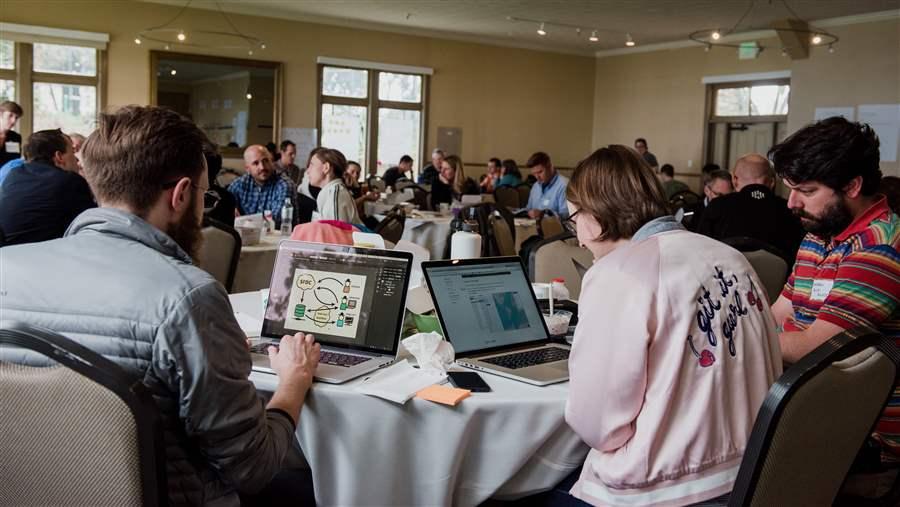From 2-Day Hackathon, Fresh Ideas to Fix National Parks
Technology for visitors and staff could help solve $11.6 billion maintenance backlog
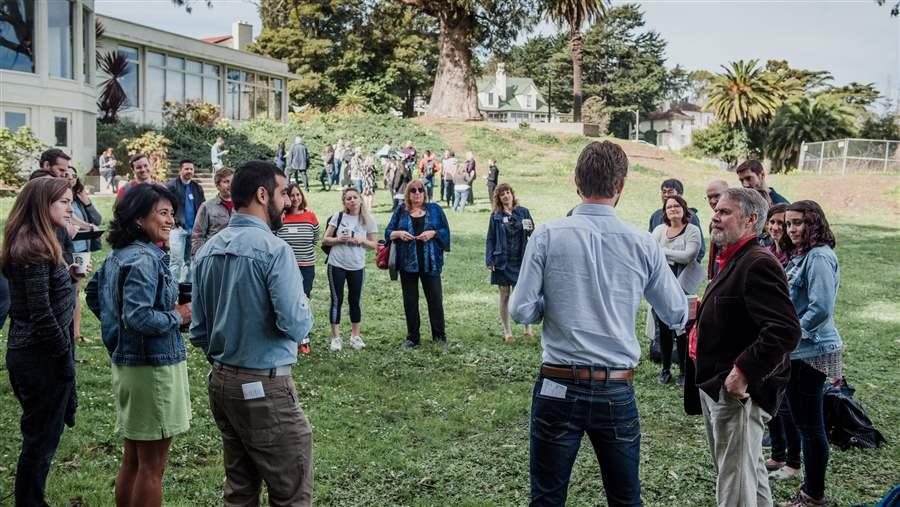
Technologists, engineers, designers, and park experts gathered at the historic General’s Residence in Golden Gate National Recreation Area for the “Parks and Tech Challenge.”
The Pew Charitable Trusts
Finding new ways to solve long-standing problems often requires shaking things up. With that in mind, The Pew Charitable Trusts brought together technology experts, parks enthusiasts, and retired National Park Service (NPS) staff members to generate tech-based ideas for addressing the $11.6 billion maintenance backlog facing America’s national parks.
The two-day hackathon, held Feb. 10-11 at Golden Gate National Recreation Area on the shores of San Francisco Bay, produced a slate of proposals to help NPS fix issues that include failing sewer and water systems, deteriorating historic buildings, crumbling roads, and blocked trails.
The 60-plus participants in the “Parks and Tech Challenge” split into nine teams and—using data, determination, and the knowledge of three experts with more than 100 years of NPS experience—turned ideas into proposals. These were then pitched to a panel of judges that included former NPS director Jon Jarvis and representatives from Pew, the National Park Foundation, the National Park Trust, the Alliance to Save Energy, the National Trust for Historic Preservation, the U.S. Senate Energy and Natural Resources Committee, Trailhead Labs, Singularity University, and Munchery.
Team Petrified Olympic Voyageurs earned the highest score, with its proposal for a key pass that would allow users to electronically pay fees for park entrance and amenities such as campground reservations and food; access park information, including real-time congestion alerts; and easily donate money to fund maintenance projects of their choice. Each of these services would be phased in on a mobile app as well, and the team left open the option of offering rewards to frequent users. The system could benefit NPS in numerous ways: easing congestion at park entrances, reducing the entry station footprint and staffing needs, increasing entrance fee collection potential, and giving the NPS more accurate and complete visitation data.
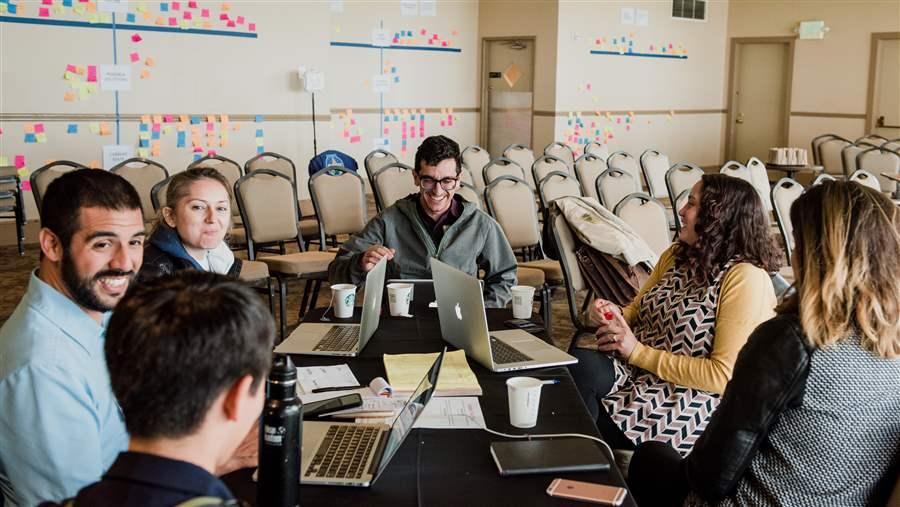
Interdisciplinary teams brainstorm tech solutions to address the deferred maintenance backlog.
The Pew Charitable Trusts
Proposals were scored for potential impact, feasibility, scalability, relevance, and creativity.
An idea to improve the collection of information on needed repairs, which is now done by hand, took second place. Team Lot48 (a reference to the TV show “Parks and Recreation”) proposed a digital platform for creating, analyzing, and visualizing maintenance work orders. The platform would include mobile and desktop interfaces that would enable park managers to quickly and accurately sync data that has been collected in the field, saving time and resulting in more standardized, real time, actionable reports.
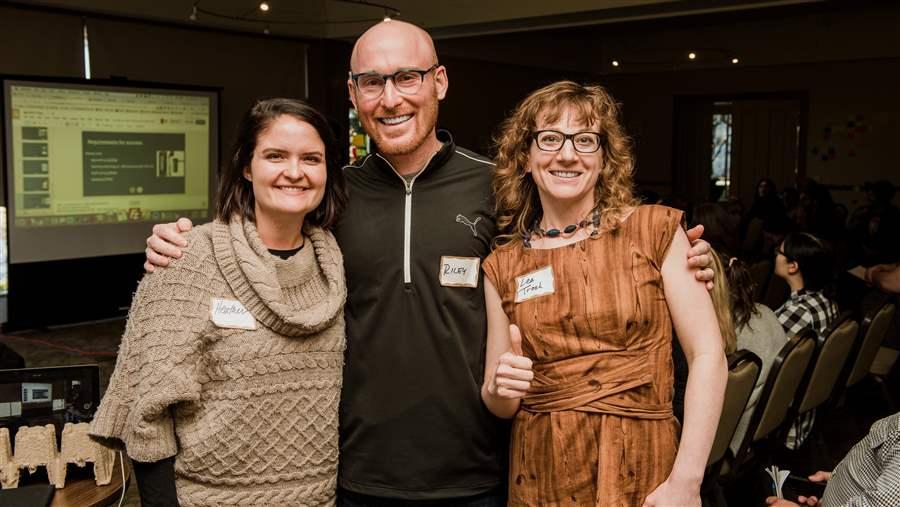
Team Petrified Olympic Voyageurs—from left, Heather Watkins, Riley Smith, and Lea Troeh (not pictured: Mike Beebe)—wins first place for reimagining the national park entrance experience.
The Pew Charitable Trusts
The third-leading recommendation, from Team App-Elation, would streamline maintenance data collection through a mobile app that would allow NPS staff to use imagery, voice recognition software, and a simplified electronic form to easily submit maintenance work orders from the field. This would greatly reduce the paperwork and staff time required to process work orders, and it also would improve data visualization capabilities.
Jarvis, the former NPS director and current executive director of the Berkeley Institute for Parks, People, and Biodiversity, was impressed by the substance of the proposals, remarking: “In combination, they could have a very serious impact on these issues.”
Other innovative ideas from the hackathon included a proposal to move the park volunteer registration process online and create one portal that would enable visitors to find and sort national park volunteer opportunities by place, date, and skill needs. It also would provide an online option to make donations for park repairs.
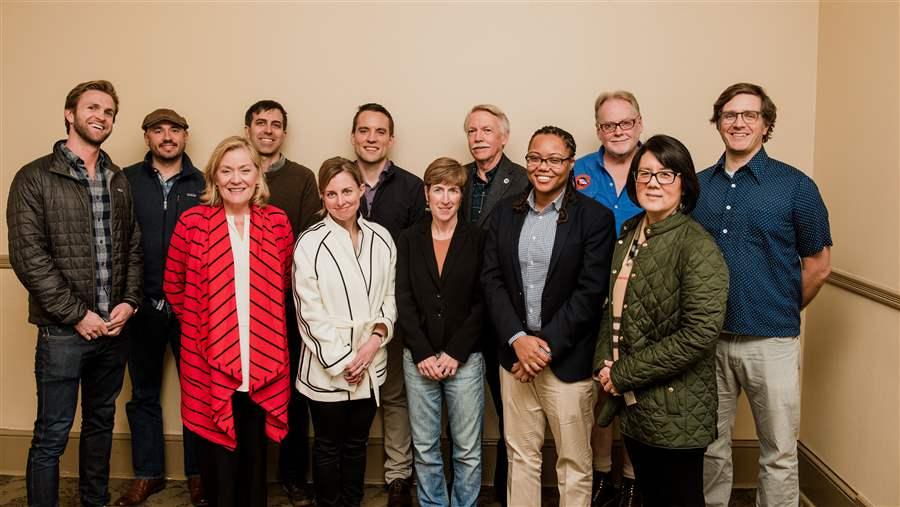
Judges included representatives from The Pew Charitable Trusts; Berkeley Institute for Parks, People, and Biodiversity; National Park Foundation; National Park Trust; Alliance to Save Energy; National Trust for Historic Preservation; U.S. Senate Energy and Natural Resources Committee; Trailhead Labs; Singularity University; and Munchery.
The Pew Charitable Trusts
Pew will share all the ideas from the “Parks and Tech Challenge” with officials at the NPS and its parent agency, the Department of the Interior, in hopes that NPS leaders will use the best recommendations to help ensure a safe and enjoyable experience for the tens of millions of people who visit America’s national parks every year.
Marcia Argust directs The Pew Charitable Trusts’ campaign to restore America’s parks.
